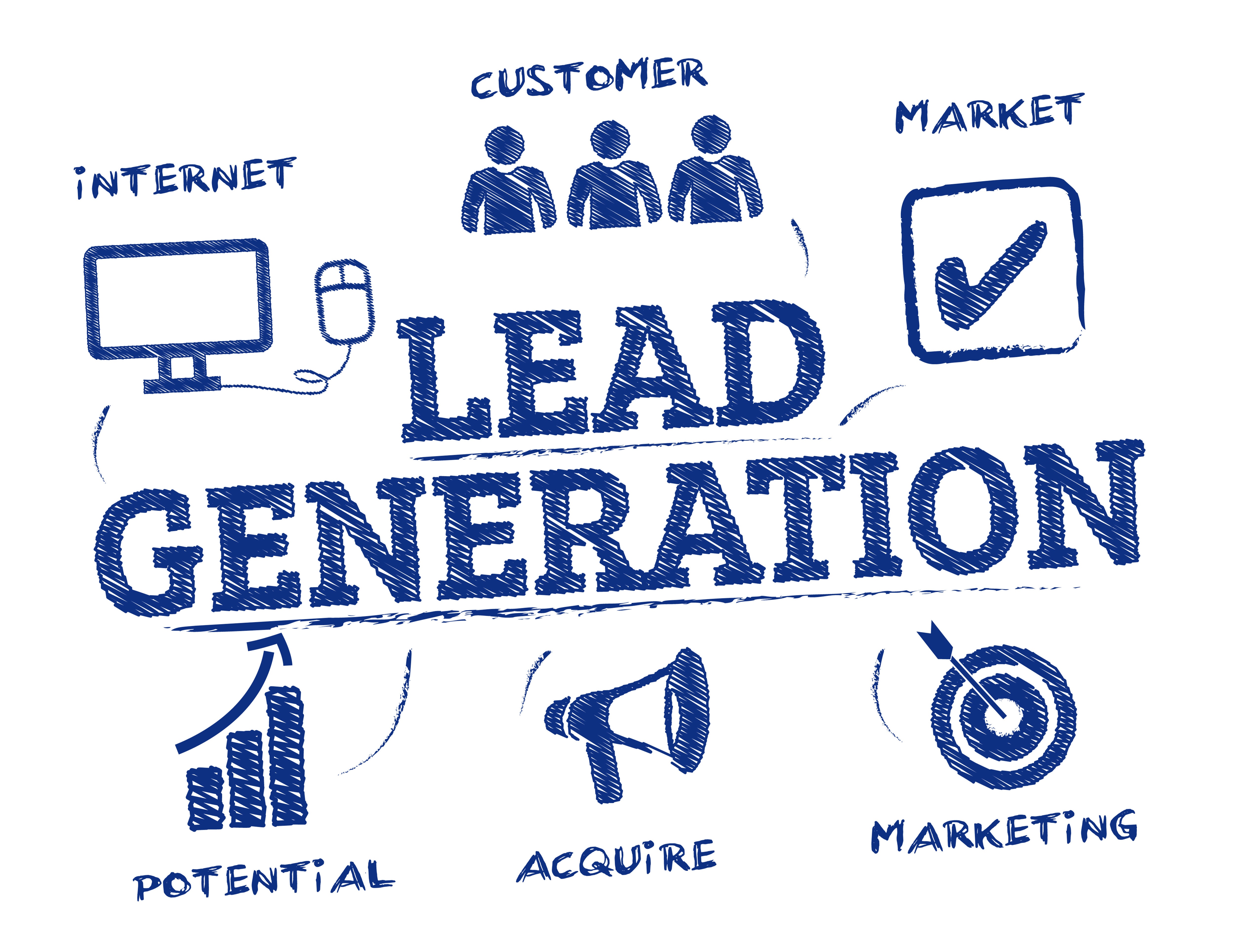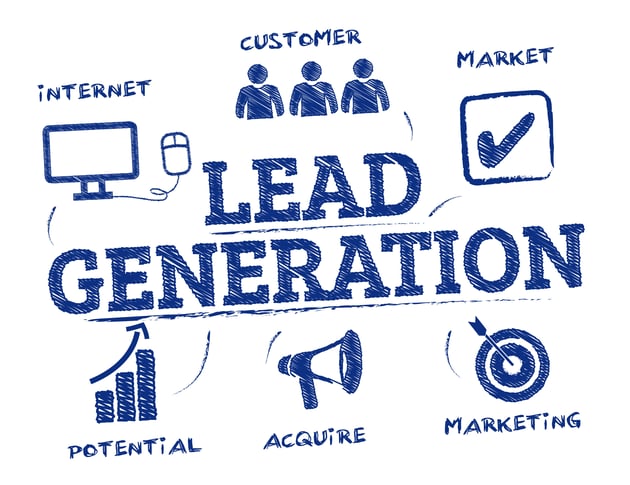

Marketing in 2017 is very different to marketing even five or six years ago. Your prospects have increasingly little time and patience for outbound marketing methods, such as mass volume unsolicited emails and cold calls. Instead, your prospects are more and more looking for what I would describe as ‘self-service marketing’ material. Informative content, available online, that helps them to solve their business problems. Rather than annoying your prospects through outdated outbound marketing methods, you need to consider attracting them to your business through your website using insightful, educational, and helpful content.
So, how do you actually put that into practice and turn your current marketing efforts into a structured set of sales lead generation activities? In this blog, I’ll share three key things you need to improve upon to develop your marketing into a B2B lead generation engine that brings quality sales leads, enabling you to increase your organisation's B2B customer acquisition and revenue for now, and into the future.
- Lead Generation
- Customer Acquisition
- Client Engagement
Lead Generation
‘Lead Generation’ is the activity of increasing the volume of new contacts that your marketing and sales team can engage with. It’s the process of getting people who have not engaged with your business before to identify themselves and verify their interest in potentially buying your product or service.
But how do you increase the volume of leads you generate through your website?
Firstly, you need to attract new visitors to your site - and you should be using the following methods to do so:
- SEO (Search Engine Optimisation)
Is your website built and written with Google in mind? Each and every web page on your site has a number of elements that need to be optimised for Google, as this will allow it to understand what your web page is about. For example, making sure your keyword is in the body copy, page title, H1 tag, URL, image alt tag and meta description, will help search engines to read and understand your page and help searchers to find it. How do you expect to rank highly on Google if it can’t understand what you are trying to rank for in the first place? I would also recommend that when you launch a new page, you link existing content to that page, wherever relevant and possible. The higher you rank on Google SERPs (Search Engine Results Page), the easier it is for people will find you. After all, no one really goes beyond the first page of a Google SERP now, do they?
- Blogging
Google likes blogging. Why? Because blogging involves creating fresh content, which Google likes. It also means you create a new indexable page each time you create a new post - meaning another opportunity to rank for a specific keyword term on Google. And, lastly, it’s your chance to show your personality through tone of voice and put yourself forward as a thought leader in the industry by providing educational and helpful content.
- Website
Is your website user-friendly? Does it provide a pleasant experience for the visitor? Having a good website design will encourage visitors to stay on your site longer and navigate through more than one page. This is essential for you to be able to provide a ‘journey’ for your visitors - a journey that hopefully ends with them converting into a lead by completing a form on landing page. By having a eye-catching website, not only can you attract and retain more website visitors, but it will also encourage them to visit at a later date.
- Social
Each Internet user has an average of 5.54 social media accounts to their name, there are also over 3.4 billion internet users worldwide. Consider the potential of attracting people on the Internet and social media channels to your site. If you’re not on social channels distributing your content, sharing high-quality articles and news or engaging with your audience, then you’re missing out on opportunities to generate new leads and grow your contact network, also known as, your followers.
- PPC Ads
Pay per click advertising – PPC ads – are a great way of only paying to advertise to people who are interested in what you do. PPC ads, which include advertising on Google, as well as putting adverts onto platforms like Facebook, LinkedIn and Twitter, allow you to target a specific audience based on their interests such as search terms, and job titles. A great way to attract people interested in what you do!
Converting leads to customers
So, if you’ve completed the above actions to attract new visitors to your site, don’t forget the bit about providing a great experience. A good website must provide an opportunity for visitors to convert to leads.
- CTAs
CTAs, or Calls-to-Action, are buttons and areas of your site where you use actionable images and words in order to direct visitors towards landing pages. This means that you should have areas on your site where you direct your visitors to ‘read more’, ‘find out more’ and/or ‘download now’, where, when clicked, the visitor is directed through to a landing page.
- Landing Pages
This is the place where conversion activity happens. Landing pages are used to offer a visitor something of value, for example: an eBook, a white paper, or a ‘how-to guide’, all in return for the visitor filling out a form with their contact details and company information. Landing pages need to be well-built and clean in order to have a high ‘conversion rate’ (people landing on the page and actually filling in the form).
- Forms
Lastly, the form on the landing page that the visitor subsequently fills in, is key. Asking for too much information on a form will put people off, whereas asking too little will mean you don’t gain enough information to follow up. Various tools can enable ‘progressive profiling’, which means that once a contact has filled in a question on a separate form, they’ll be asked something else next time they fill in a new form rather than the same question again.
Customer Acquisition
Once you’ve increased the number of new leads being generated on a monthly basis, it’s important that you have the correct tools, processes and methods in place in order to convert those new leads into paying customers. But the B2B customer acquisition activity doesn’t just ‘sit’ with the sales team; the marketing influence is still huge at this point, and the types of content you create for contacts that you’re trying to ‘get over the line’ are very different to the content pieces you’re creating to try and bring people to your site in the first place.
Email tools are used in order to follow up with visitors and contacts once they’ve visited and converted on your site. The importance of email templates and functionality is key at this stage; you need to make sure that visitors can receive, open and click your emails in order to move them further on in your sales funnel.
Why not check out our email marketing tips for small businesses?
- Marketing Automation
With those emails I mentioned above, imagine not having to manually send them out? Marketing Automation can do that for you. You should be using Marketing Automation in order automate things like follow up emails and sending content, automating correspondence based on content and interactions that the contact has previously had with your website and business. In addition, internal automation like lifecycle stage, sales management and lead management can help improve your processes and sales efficiency.
- CRM & Contacts
Is your CRM helping your sales and marketing efforts? It should be helping to manage leads, as well as improving your client engagement. By having a ‘profile’ for each contact within your CRM, it allows your team to understand every single touch point and interaction that the contact has had with your company and website in order to tailor your next steps.
- Lead Scoring
Remember all those new visitors to your site that you’ve attracted and converted into leads? Which ones do you contact first? Lead Scoring gives each individual a specific score based on the number of web visits, page views, downloads and much, much more. You set the scoring system, allowing your team to follow up with the most qualified contacts first.
Client Engagement
If you thought marketing stopped once a lead had been generated, you are wrong. Secondly, if you thought that the marketing involvement finished once the sales team had taken responsibility for a lead, you are wrong again. Marketing activity also plays a part in actually getting prospects over the line and turning them into customers. Once a customer has signed, the pressure is then on for your business to ‘delight’ and ensure they stay as a customer, becoming an evangelist for your business and eventually telling others about how great you are. Your marketing efforts at this stage should be covering ‘customer only’ insights and content.
- Integration Tools
Marketing technology in 2017 allows you to integrate a variety of tools together, and use tools like Zapier to integrate platforms which don’t have ‘out of the box’ integrations. In order to be most efficient, you should be integrating things like your marketing tools and your CRM system, including your website and social channels - all with the goal of creating a holistic view of each of your visitors, prospects and customers.
- Smart Content
Using smart content on your site also allows you to ‘delight’ people. Why should a sales opportunity or an existing customer see the same information on your website as a brand new visitor? Isn’t your messaging and content meant to be different depending on whether or not someone is a customer or prospect? Smart content allows you to tailor modules on your website based on who is viewing the site, from what country, and from what type of device. This allows you to serve up visitor-specific content and information, meaning at each stage of the sales cycle, your prospects are delivered different - but relevant - information.
- Reporting & Analytics
Everything listed in the above should be tracked, monitored and used to make future marketing and business decisions that are based on what worked - and what didn’t. But you should also be looking for a platform which provides you with live information and reporting dashboards to help improve all of your activity moving forward - and in real-time.
There are various marketing automation tools which provide you with the functionality to achieve all of the above. G2 Crowd has put together a list of the ‘Top Marketing Automation Tools’ in the market, which you can view here. In addition, we’ve put together a comparison of the top three, Marketo, Pardot and HubSpot.
Click here to download those slides now.
Tip #24: When it comes to B2B lead generation, client acquisition and customer engagement in 2018, there are a variety of tools that will enable your business to address everything mentioned above. In building a truly effective sales lead generation engine, you must appreciate the fact that these elements must come together as a whole. You need one end-to-end process that attracts, converts, closes and delights your prospects - and the tips outlined here will help you to do so!
If you'd like to receive the latest 'All that PR & Marketing Bollox...Explained!' blogs straight to your inbox every week, you can subscribe below:



Submit a Comment